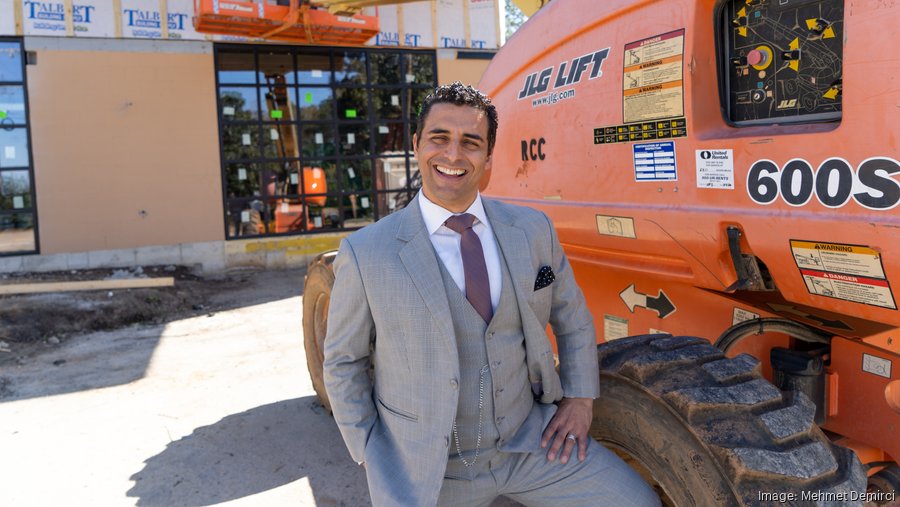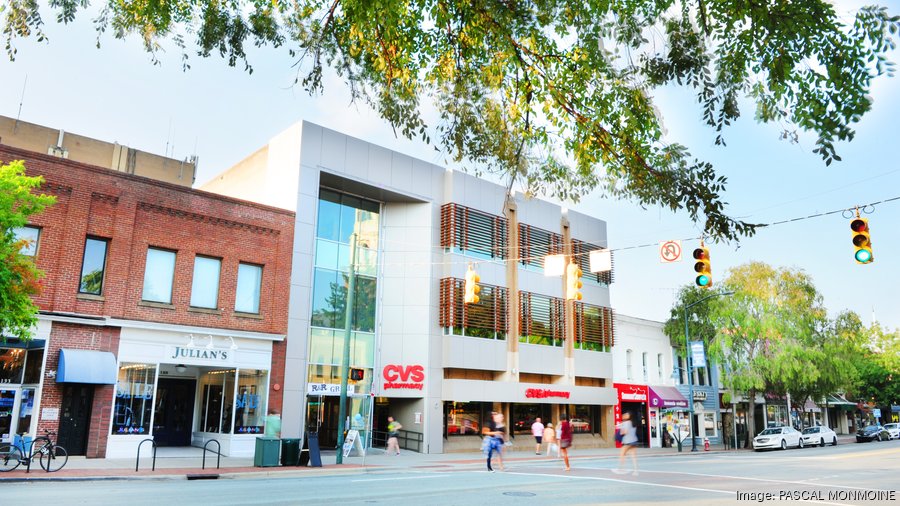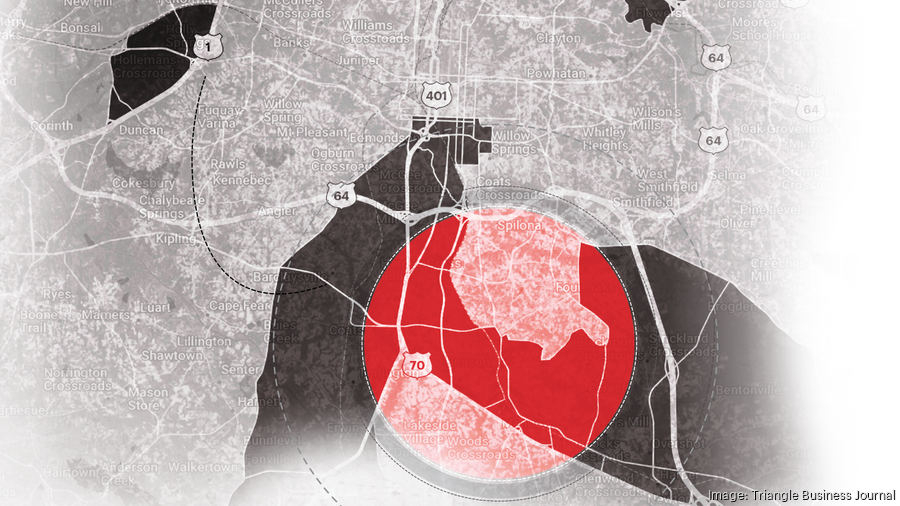In 2017, CityPlat principal Vincenzo Verdino learned of a new program just implemented by the federal government to encourage investment and development in underutilized properties around the country, and he wanted in.
The program established certain census tracts as Opportunity Zones and allowed investors to put capital gains into properties in underserved areas with serious tax benefits.
“When the legislation was first announced, people heard this is one of the greatest tax benefits in our lifetime and the thought was it’d be similar to the 1031, where it’d be easy for passive investors to take advantage of it,” Verdino said. “That’s not the case at all. It’s really designed for developers. It’s all about how much developers are incentivized or interested.”
He and his partners at CityPlat quickly began looking to see if they had any properties in the Opportunity Zones and what, if any, benefit that could bring. They soon found three they were already working on and determined this was a program they were interested in pursuing.
“None of those did we end up moving forward with as an Opportunity Zones project, but it opened that doorway and as a result we saw how much benefit can come from doing an Opportunity Zones project,” Verdino said. “So from that point on we were actively searching for a project in the Opportunity Zones.”
They began making offers on properties that qualified under the program – until they found the first one that stuck.
And CityPlat wasn’t the only one rushing into the space. The boutique development and real estate firm, then based in Cary, joined a growing host of investors and developers interested in making the most of the new program.
Soon, millions of dollars began pouring into the zones.
“There was a mad rush in the beginning to buy,” said Moss Withers, president and principal at Lee & Associates Raleigh-Durham. “There were literally millions of dollars being raised to invest in Opportunity Zones.”
What is not clear however is if the new administration in Washington, D.C., led by President-Elect Joe Biden along with the leadership team in the U.S. House and the U.S. Senate, will make pointed changes to the program in order to incentivize developers and investors to do more with jobs and workforce housing while keeping economic inequality in mind.
In recent weeks, there has been talk in inner Washington circles that the Opportunity Zones initiative may need to be reformed to make room for timely disclosure and transparency so the incentives are going to developers that are helping communities in need, and not being used just as a tax break for the wealthy.
Meanwhile, Verdino and his partners at CityPlat continued to make offers on properties in the hunt for their first Opportunity Zone project.
“In between, we’ve probably had a dozen properties we’ve made offers on or tried to make work,” Verdino said. “We specifically looked for Opportunity Zones tracts where we could take advantage of this legislation.”
Finally, CityPlat found a property that was workable – in Garner.
How the zones work
The program lets investors take capital gains from previous deals, invest them in Opportunity Zones and defer the taxes on those gains until 2026. They also pay reduced taxes on the gains and pay no capital gains tax on the gains from the investment.
So a developer could take $1 million profit from a real estate deal, invest in an Opportunity Zone, sell that investment later for a profit of $2 million and pay less tax on the original $1 million profit – and no capital gains tax on the $2 million in profit.
“So the way we kind of describe it is like a Roth IRA, on steroids, for developers,” Verdino said.
“It makes sense for us in that we are already developing properties,” he said. “The big thing for an Opportunity Zone is you have to substantially improve the property.”
The program came out of the Tax Cuts and Jobs Act of 2017 in an effort to incentivize investment in underserved areas. By 2018, state governments had identified the census tracts that they would include as Opportunity Zones.
Investors also have to at least double the value of the property through improvements in order to qualify for the program.
Morningstar Law Group’s Molly Stuart is one of the attorneys who works with developers to utilize the Opportunity Zones program.
“It’s designed to one, attract capital into these zones as opposed to somewhere else,” Stuart said. “The second thing it does is it keeps the money there.”
As a part of the program, investors who hold their properties for longer get more benefits from the program.
“You can’t just buy the property you have to at least double the property value or improvement value to qualify,” Verdino said. “We were naturally already doing that.”

Initial impact
As investors poured into the new space, data from CoStar show property transactions skyrocketed in census tracts marked as Opportunity Zones.
Between 2017 and 2018, total property sales in Opportunity Zones jumped from $502.6 million to $639.4 million. That ticked up again in 2019 to $656.2 million.
And while the data doesn’t show which of these investments plan to take advantage of the program, Costar Group market analyst Victoria Lim said there is a clear jump in investment in those zones since the legislation took effect.
“There was a pretty significant uptick overall in Opportunity Zone sales in 2018 and ‘19, which of course coincides with Opportunity Zone legislation,” Lim said.
Soon, plans for new developments in Opportunity Zones began popping up on city and town agendas around the country.
In Durham, SLI Capital and Trinity Capital Advisors have partnered on the massive Venable Center redevelopment project, making use of the program.
SLI Capital Managing Partner Bryan Kane said the company also has a letter of intent for another Opportunity Zones project in the area and currently has one under contract in Nashville, Tennessee.
Meanwhile, many are still early in the planning stages and it is often unknown how the Opportunity Zones will factor in.
In Raleigh, the proposed Downtown South sports stadium project by Kane Realty Corp. and soccer leader Steve Malik is perhaps the highest profile project in a Triangle Opportunity Zone.
Additionally, Charlotte developer Grubb Properties’ E. Rosemary St. proposed development also sits in an Opportunity Zone. That project is expected to bring up to 200,000 square feet of office and lab space to Chapel Hill, with the potential to remake a large portion of downtown.
In 2019, CityPlat announced its plans for its first Opportunity Zone project, and today work is already well underway. Dubbed The Distillery at Rand Mill, the project calls for an events space, distillery and other retailers in downtown Garner.
That project is expected to open in the spring. (Story continues below graphic)
Questions around impact
As investors continued pouring money into new land purchases and property investments, Opportunity Zones saw a major influx in new construction.
Across the Triangle Opportunity Zones, construction has exploded since the start of the program.
According to data from CoStar, total square feet of construction in Opportunity Zone census tracts jumped from 5.25 million square feet in 2017 to 10.82 million square feet in 2018, when the zones were finalized. That was followed by another jump to 15.52 million in 2019.
“Looks like construction activity doubled from 2017 levels to 2018 and 2019,” Lim said.
Again, the data doesn’t track which of these projects are making use of the program.
Still, questions remain around how much of these investments would have been made anyway.
At Lee & Associates, Withers said he has seen many funds looking to take advantage of the program that would have moved ahead whether the benefits were in place or not.
“It’s almost like an icing on the cake,” he said. “You’re not targeting deals in the Opportunity Zone, but if it’s in the Opportunity Zone…”
At the Venable Center development, Kane said they originally bought the property thinking they wouldn’t do an Opportunity Zone project, though they eventually decided to utilize it.
But Kane said this may not be the case for smaller projects or those in areas considered more uncertain.
“On the other hand there are a lot of people with capital gains that are on the edge, that would be cautious to do if they weren’t getting the tax benefits,” he said. “I think it’s hard to quantify but I think it has made capital look at areas that are on the edge of good locations.”
Morningstar’s Stuart said the impact question is one she hears from time to time, but said it’s too early to say for sure.
“We’ve heard disappointment in the program, a lack of impact,” she said. “(But) It was always meant to have a long-term impact.”
Two years, she said, isn’t enough time to measure the results.

Today
Today, Covid-19 has investors around the country hitting the brakes on development projects, and Opportunity Zones appear to be no different.
Sales in OZs dipped from $246.1 million in Q4 of 2019 to $46.9 million in Q1 2020, according to CoStar. That number has remained stagnant since.
Meanwhile, construction plunged from 3.1 million square feet underway in Q2 to just 422,906 square feet in Q3.
Kane said he’s also seen interest wane a bit since the start of the pandemic.
“The last six or eight months haven’t been a terribly normal period to invest in,” he said, “so, it’s been a bit out of the ordinary especially for a program that’s so unique anyway.”
Still, developers across the Triangle say they’re still pursuing projects that could make use of the legislation.
At CityPlat, Verdino said he and his partners remain staunch supporters of the program and the impacts he said it's having on communities in the Triangle and around the country.
“We’ve seen it in some other markets. A lot of cool adapted reuse markets,” Verdino said. “Opportunity Zones have really created a kind of shot in the arm for areas like that. We’ve met lots of developers and guys like us around the country looking to do these kinds of things. They make sense if you can find the project.”
Today, the company has four Opportunity Zone projects in the works, with plans unveiled for two: the one in Garner, and Borden Brick – a mini entertainment district planned at the site of an historical brick plant in Durham.
Verdino said both of these projects are thanks to the Opportunity Zone program.
“I can say specifically and wholeheartedly that these two projects would not have happened if not for the Opportunity Zone,” he said.
“We’ve been still putting offers in on a number of properties in Opportunity Zones. It needs to make sense and we’re still interested and looking,” Verdino adds.
“We’re huge proponents of what they represent and – no pun intended – the opportunity.”
